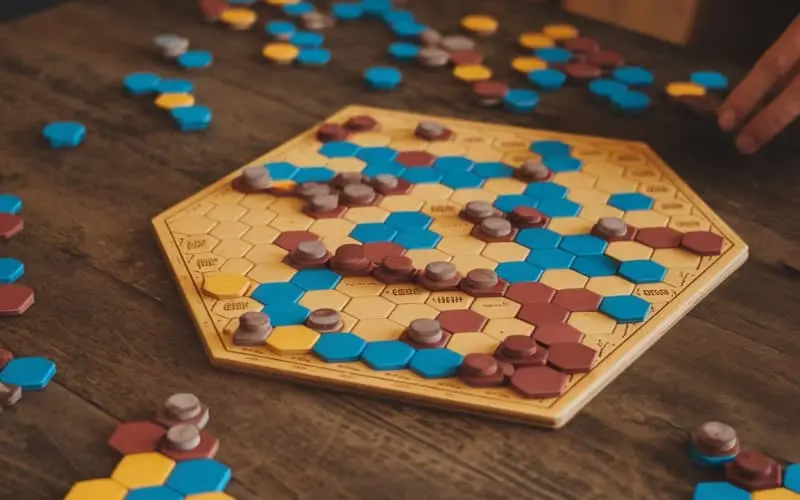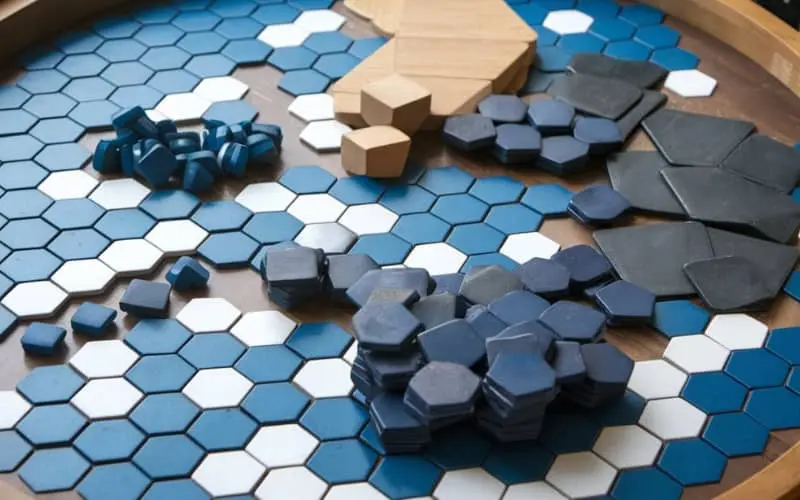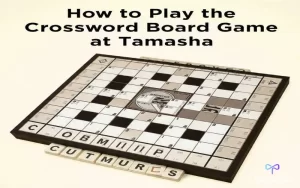Azul, an award-winning tile-placement game by Michael Kiesling, attracts strategy game fans worldwide. Players decorate a palace wall with colorful tiles, requiring skill and foresight to master. This guide helps you develop winning strategies for dominance in Azul, outsmarting opponents.
Understanding the Basics of the Azul Board Game
Before diving into advanced strategies, it’s essential to understand the fundamentals of the Azul board game. Players take turns drafting tiles from factories or the center of the table, placing them on their personal boards in specific patterns tamasha. Points are scored based on how the tiles are placed on the board, with bonuses for completing rows, columns, and specific tile patterns.
The objective is simple: score the most points by strategically placing tiles. However, to dominate the game, you must do more than just place tiles; you need to anticipate your opponents’ moves and manage your resources wisely.
Key Strategies to Win in Azul Board Game
1. Prioritize Middle and Late Game Scoring
In the Azul board game, it can be tempting to focus on completing rows early in the game to score points quickly. While this may give you an initial lead, it’s essential to think about your long-term strategy. The real points come from completing columns and specific color sets.
- Columns: Completing a column is worth seven points, which is the highest bonus you can earn in one go. Focus on working towards column completion by the middle to late stages of the game.
- Color Sets: If you manage to place all five tiles of a specific color on your board, you’ll receive a valuable 10-point bonus. Keep an eye on the colors you’re drafting to ensure you don’t miss out on these points.
Focusing on columns and color sets will ensure that you score consistently in the later rounds when other players might be running out of steam.
2. Control the Flow of the Game
One of the most effective strategies in the Azul board game is to control the pace and flow of the game by manipulating the tiles available for drafting. By drafting specific tiles or leaving particular tiles on the board, you can limit your opponents’ options.
- Denying Tiles: Always be aware of what tiles your opponents need. If an opponent is about to complete a column or row and a certain tile would help them, consider drafting that tile to prevent them from scoring big points. This may force them into taking penalties or missing out on key bonuses.
- Forcing Penalties: When there are only a few tiles left on the board, you can sometimes force your opponents into taking unwanted tiles, leading to penalty points. If you see that your opponent has no place to put certain tiles, leave them on the board until they have no choice but to take them.
3. Manage Your Tile Placement Carefully
Efficient tile placement is crucial in the Azul board game. Misplacing tiles can lead to wasted turns or even penalty points. Here are some tips to optimize your placement:
- Plan Ahead: Always think about how the tiles you place now will affect your future moves. Aim to place tiles in a way that allows for flexibility in the next round. Avoid backing yourself into a corner where you’ll be forced to draft tiles that result in penalties.
- Work on Multiple Rows Simultaneously: Instead of focusing on completing one row at a time, try to distribute your tiles across several rows. This will give you more options during the drafting phase and make it easier to avoid penalties.
4. Timing is Everything
Timing your actions is crucial in the Azul board game. Knowing when to complete a row or column, when to draft tiles aggressively, and when to hold back can make all the difference.
- Late Game Tile Denial: In the later stages of the game, denying tiles becomes even more critical. Look at the tiles your opponents need to complete their patterns or columns and draft them to prevent them from earning high points.
- Endgame Bonus: As the game nears its conclusion, you’ll want to focus on completing rows and columns to maximize your bonuses. Be mindful of how many tiles are left and start planning how to secure those final points.
5. Be Mindful of Penalties
In Azul, penalties can quickly add up if you’re not careful. Every tile that you cannot place on your board results in negative points, which can drastically impact your score.
- Avoid Overdrafting: Sometimes, it’s better to take fewer tiles even if it means leaving tiles for your opponents. Overdrafting can lead to unnecessary penalties that outweigh the benefits of having extra tiles.
- Strategic Sacrifices: There may be moments when taking a small penalty is necessary to prevent your opponent from gaining a large advantage. In these cases, carefully weigh the risk and reward before making your move.
Adapting to Opponents’ Playstyles
The beauty of the Azul board game lies in its dynamic nature. Every game will be different depending on how your opponents play. Some players might be aggressive in denying tiles, while others might focus on their own board without interfering much with others.
- Adapt to Their Strategy: Pay attention to how your opponents are playing. If they are focusing heavily on color sets, for example, you may want to adjust your strategy to deny them tiles.
- Stay Flexible: The best Azul players are those who can stay flexible and adapt to the changing game state. Keep an open mind and be willing to shift your strategy based on how the game is unfolding.
Conclusion
Azul is more than placing tiles; strategic play, planning, and adapting are key to winning. Master long-term scoring, tile flow, penalties, and opponents to dominate. Apply these strategies, dive into Azul, and craft your path to victory!









